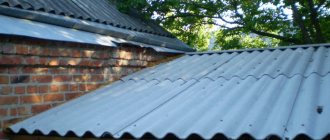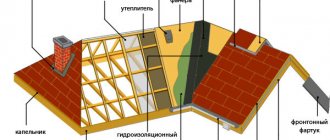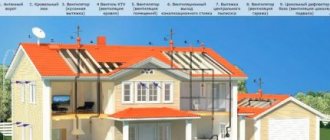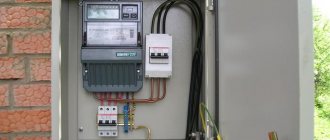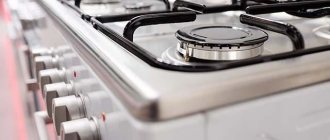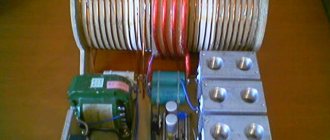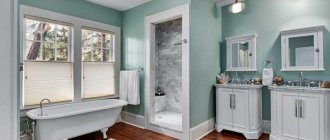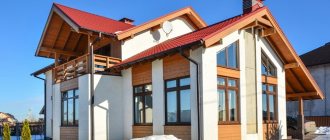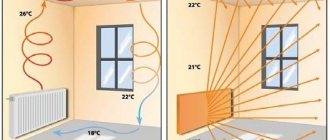How to save on a roof when choosing a project?
In general, without a project, you can build a roof of the simplest shape on a small house, but even in this case it is worth sketching at least a sketch of the rafter system. When designing independently, choosing a standard project or drawing up technical specifications when ordering an individual one, in order to save money, it is worth considering the following. The simpler, the cheaper - complex hip roofs with dormer windows, kinks and several levels look beautiful. But they cost an order of magnitude more, both in terms of materials costs and in terms of payment for roofing work. It is almost impossible to do such a roof correctly on your own, and mistakes can lead to expensive reconstruction. And you can increase decorativeness through a skillful combination of colors and textures.
Slate
The most common material available to a wide range of consumers due to its low cost.
A slate roof has certain positive qualities: it is durable and resistant to fire.
Slate has the following qualities:
- durable (about forty years);
- resistant to moisture;
- confidently withstands mechanical damage;
- able to withstand significant loads (snow).
Slate is characterized by certain disadvantages. Over time, under the influence of moisture, its edges crumble, and lichen appears on the shaded areas of the roof.
Which roof to choose?
The choice of roofing covering directly affects the estimate of the roof as a whole, both due to the parameters of the material itself and due to the installation technology. Thus, natural or cement-sand tiles are characterized by greater weight, which is why a reinforced rafter system will be required for them. Under the soft tiles you will have to make not only a sheathing and a counter-lattice, but also a solid screen, plus underlay carpets. In addition, the more complex the installation of the roof, the more expensive the contractors will charge, and if we are talking about premium materials, the price depends not only on the complexity of the installation, but also on their cost. However, buying the cheapest materials is not saving, but a waste of money. The roof is a long-term project and the longer it does not require reconstruction, the better for the owners.
The roofing covering should be assessed as a whole, based on the ratio of cost, quality and durability, taking into account additional elements. As for decorativeness, today the leader in reliability and durability - slate - is experiencing a rebirth. If at first it was simply painted in the paste for beauty, now they are confused with the profile - they are already producing chrysotile cement sheets that imitate tiles. Essentially the same time-tested slate, but it looks much more presentable.
Review of roofing materials: pros, cons and cost
To determine which roofing material is best for a roof , you need to study all the varieties:
- Leafy. The largest class of roofing materials. They are convenient to use when the roof area is large enough, since installation of the sheets proceeds quickly.
- Rolled. Most often used for flat or low-slope roofs. The base is fiberglass, foil, asbestos paper or cardboard.
- Piece. The most inconvenient option for installation of roofing materials. It is better to choose them if the roof area is not too large, since its covering will have to be assembled from separate and not too large elements.
Sheet roofing materials
How to cover the roof of a house , if you choose from sheet materials:
- asbestos-cement slate;
- polymer-sand slate;
- corrugated sheet;
- metal tiles;
- ondulin.
Asbestos cement slate
Asbestos is a mineral mined in mountain mines. It has a strong and at the same time fibrous structure. In its pure form, asbestos is dangerous to people. Once in the respiratory system, it irritates the mucous membranes and causes scarring. In this regard, asbestos began to be used in combination with cement. They form a strong chemical bond and make the building material non-hazardous. But experts still differ in their opinions regarding the safety of the material.
Asbestos cement contains about 18% asbestos - this is enough to make slate strong, durable and tensile-resistant. To produce slate, asbestos cement is passed through molding equipment and given the desired profile.
What does asbestos-cement slate look like?
In private housing construction, seven- and eight-wave asbestos-cement sheets are most often used. Six-wavelength ones are used for industrial facilities. The weight of 1 m2 can be 9-18 kg. The specific value depends on the thickness of the sheet, the number of waves and humidity.
Main dimensions:
- Width – 1.5 m.
- Length – 3-3.5 mu
- Thickness – 8-10 mm.
On the market you can most often find sheets of 2.5x1.2 m. They may have a smaller thickness - 6-8 mm.
Requirements for slate
Slate advantages:
- Fire safety;
- moisture resistance;
- low thermal conductivity;
- frost resistance;
- durability;
- strength.
Slate also heats up much less in hot weather than metal roofing. It withstands temperature changes and retains heat well in the building, and also provides good sound insulation. The service life is 20-30 years.
Average cost: from 100 to 800 rubles. per sheet.
Disadvantages of slate:
- large weight of sheets (not suitable if it is necessary to ensure a low load on the foundation);
- susceptibility to moss growth;
- fragility.
Polymer-sand slate
Polymer-sand slate is an innovative roofing material. It contains 70% sand (replaces cement), and the rest is polymers (agglomerates of soft polyethylene and hard polystyrene, polypropylene, etc. This combination of raw materials provides slate with:
- light weight;
- simple installation technology;
- resistance to loads (you can walk on it);
- reduced amount of waste (easily cut with a hacksaw);
- minimal risk of condensation;
- service life up to 40 years;
- high degree of sound insulation.
The material also does not accumulate static electricity and is not afraid of acid rain, hail, rotting and corrosion. The use of recycled materials (polymers) reduces the cost of slate.
Polymer-sand slate can be colored
Among the disadvantages of the material, it is worth citing the following facts:
- complexity of installation (strict adherence to sequence and appropriate skills);
- there are no indicators of durability, since the material is quite new on the market.
Standard slate dimensions are 1700x1120x4 mm. The sheets have the same wavy shape, but unlike asbestos-cement sheets, they weigh less - about 6.5 kg per piece. One such sheet can cost about 250 rubles.
Corrugated sheeting and metal tiles
What is better to cover the roof of a house - corrugated sheeting or metal tiles? This question still remains controversial because it does not have a clear answer. It all depends on the budget, purpose of the building and roofing requirements.
Differences between materials:
- Corrugated sheeting has no restrictions on slope. Metal tiles are laid only on a slope of 14°; they are not used on flat roofs.
- Profiled sheets are used mainly for outbuildings and garages. It is also suitable for the roof of a residential building. The roof will be strong, reliable, and will withstand heavy wind and snow loads. But its appearance will be worse than that of metal tiles.
- As already said, metal tiles look more attractive. It has a more complex shape, while the profiled sheet has a simple trapezoidal profile.
- Corrugated sheeting is heavier than metal tiles, and even thicker - 1.2 mm versus 0.6 mm on average.
- With the same protective coating, corrugated sheeting will last longer than metal tiles.
- The corrugated sheets have increased dimensions, which reduces installation time. But due to the heaviness, you have to work with several hands. You can install metal tiles yourself, but installation is technologically more difficult.
- The cost of corrugated sheets is lower than the price of metal tiles. In this regard, a cheaper material for the roof is profiled decking.
We recommend studying: “Corrugated sheeting: all characteristics, properties, markings and rules of use.”
External differences between corrugated sheets and metal tiles
Thus, it is impossible to say unequivocally what is better – metal tiles or corrugated sheets. Everyone chooses based on goals and preferences, as well as budget. If the decisive factor is a presentable appearance, then choose metal tiles; if saving money, choose corrugated sheets.
The disadvantages of a metal roof are:
- poor heat and sound insulation;
- a large percentage of waste (for tiles);
- formation of condensation on the inner surface during sudden temperature changes.
We advise you to study: “Is it worth putting metal tiles on the roof?”
Ondulin
Ondulin is a wavy bitumen sheet. It is based on thick cardboard impregnated with high quality bitumen. The top layer is covered with resin, which protects against damage and sunlight.
Ondulin structure
In Europe, ondulin is widely used instead of asbestos-cement slate because it is more environmentally friendly, practical and cheaper. They look very similar to each other, but the difference in properties is significant. Ondulin is much lighter, its weight on average is 4 kg/m2. The most well-known brands on the market are “Aqualine”, “Bioline”, “Bituvel”, “Gutta”.
Average cost: 300 rub. per sheet 500x1000 mm.
Pros:
- good insulation from moisture, noise and sunlight;
- beautiful appearance;
- light weight;
- high strength with low thickness;
- there is no danger of spontaneous combustion;
- service life up to 50 years;
- resistance to corrosion.
Flaws:
- in case of fire, the material burns;
- color may fade over time;
- a rough surface that holds snow (in some cases this can be a plus);
Roll roofing coverings
Next in the ranking of the best way to cover the roof of a house are roll materials:
- Ruberoid. The most common in its category and the most budget material.
- Roll tiles. Cheaper and easier to install analogue of ceramic and bitumen tiles.
- Welded roll roofing. This includes roofing felt and other similar materials that are applied to the roof by fusing.
We advise you to study: “Fused soft roll roofing.”
Ruberoid
The cheapest roofing material is roofing felt. Its cost is only about 20 rubles/m2. But it has limitations in its use. Ruberoid is used only on houses with flat or pitched roofs.
The material is based on roofing cardboard, impregnated with bitumen and protected with topping. The advantages of roofing material include:
- low price;
- complete moisture resistance;
- resistance to temperature changes;
- UV resistance.
The last two advantages apply only to modern modified roofing felt. Its analogues are Stekloizol, Linokrom, Technoelast, Bipol, Bikrost and Uniflex.
Rolled materials are fused onto the roof using a gas burner
Piece roofing coverings:
- ceramic tiles;
- polymer-sand tiles;
- bituminous (flexible) tiles.
Ceramic tiles
Ceramic tiles are the “oldest” material that has been used in roofing for more than 100 years. It is made from pottery clay, which is molded, stamped, pressed and fired.
Criteria for choosing ceramic tiles
Today such roofing is rare. The reason is the main disadvantage - the high cost of the material. Not everyone can afford a clay tile roof. The cost of one small plate can range from 100 to 1000 rubles. and more, while about 9 pieces are required per 1 m2.
Another important disadvantage is the very heavy weight. It can reach up to 40-60 kg per 1 m2. Other disadvantages:
- the roof must have a steep slope so that water drains from the tiles;
- very high fragility of the material (easily damaged during transportation and installation);
- complexity of installation (tiles are laid manually, one element to another, which takes a lot of time and effort).
The main advantage of the material is simply its wonderful appearance. Natural tiled roofing looks really beautiful and presentable, emphasizing the status of the owner of the house.
How aesthetically pleasing does a ceramic tile roof look?
Polymer-sand tiles
Polymer-sand slate has similar properties to polymer-sand tiles. It has the same advantages and disadvantages, as well as cost per 1 m2. Outwardly, it imitates the appearance of expensive ceramic tiles, but is less capricious in installation. The shape is the same, only holes for self-tapping screws have been added.
Polymer-sand tiles are one- or two-wave rectangular parts of a standard size of 300x400x9 mm. Depending on the location on the roof, ordinary, ridge and wind elements are distinguished. The material has a varied palette of colors.
Polymer-sand tiles are similar in appearance to ceramic
Bituminous shingles
Shingles are fiberglass impregnated with modified bitumen. On top it is covered with a coating in the form of mineral crumbs - basalt granulate, and on the bottom it is covered with plastic film. The structure of the tiles resembles a “layer cake”. It can have different forms of cutting shingles (edges):
- diamond-shaped;
- shingles;
- "beaver tail";
- brick;
- hexagonal;
- rectangular, etc.
The most popular manufacturers of bitumen shingles:
- Shinglas,
- Tegola,
- Katepal.
Example of finishing with bituminous shingles
Average cost: from 200 to 1500 rubles/m2.
Among the advantages of the material, it is worth noting the wide selection of shades, which are very unusual, often with tints. Bituminous shingles are used when laying new and repairing old roofs. It can last up to 50 years. A few more advantages:
- low electrical conductivity;
- no waste during installation;
- environmental friendliness;
- versatility;
- ease of installation;
- low load (about 10 kg/m2).
The disadvantages include the need to prepare the base for installation. Underlayment carpet is often required. It is also important that the roof has a slope of at least 12°, otherwise leaks are possible.
I want to cut costs, how can I avoid making mistakes?
In no case should you skimp on quality:
- You cannot use substandard lumber;
- it is impossible to reduce the design sections and increase the pitch between the rafters in order to reduce consumption;
- non-specific materials cannot be used;
- You cannot violate technology, change the composition of the roofing pie and abandon protective membranes;
- You cannot purchase the thinnest and cheapest metal roofing coverings.
Violations are fraught with completely bleak prospects.
It is highly likely that not only the roofing material is of poor quality, but also the subsystem was assembled from damp wood
Our works
Reconstruction of the roof in Pozdnyakovo
Replacement of roofing in Dzerzhinsky
Roof installation in EKP "Monolith"
Reconstruction of the roof in Gorodishche
How can I save on materials without skimping on quality?
It is quite possible to reduce costs without compromising the results.
In the absence of relaying - when the rafter system is designed for the expected loads, taking into account the type of roof, and not according to the upper limit “just in case”. For example, a board with a cross section of 100×200 mm, 50×250 mm and 50×275 mm is suitable for the load; the optimal option is a board 50×250 mm. If the cost is equal, there is more of it per cube, why pay more.
On measurements.
Pil18MODERATOR FORUMHOUSE
Accurate measurements allow you to make an accurate calculation, and an accurate calculation means saving money (don’t buy more than you need).
On purchases - you cannot save on the quality of the material, but you can win a good amount on the difference in selling prices from different dealers. For example, the portal has a topic in which professionals evaluate estimates issued by different organizations. One of our participants asked to evaluate the four most affordable offers in Chelyabinsk. The adequacy of prices for soft tiles and other items raised doubts, and leks74 decided to request an estimate in neighboring Yekaterinburg. I was pleased with the result.
leks74FORUMHOUSE Member
Here you go. We managed to reduce the price tag for tiles to 290 rubles. And for other positions too. In total, the price tag decreased by 150 thousand rubles.
Also, you can try to bring down the high price.
lil_aframeFORUMHOUSE member
The estimate included flexible tiles at 360 rubles/m² - red, brown, marsh, and we love blue. At some point we saw the Glacier and our heart melted (pun intended). But the inner Jew reported that 510 rubles was the bottom. So I sat down and made a list of companies that had such tiles, and I got a table of 27 contractors. Those that would not be delivered to the site were excluded. Then she began sending estimates to all companies, bringing down the price. This is a marketing technique - if you need something cheaper, just say that someone gives a lower price. This time I sent down estimates - roofers don’t take my word for it, especially when it comes to 100 rubles. Drum roll: I have Glacier tiles for 390 rubles!
Corrugated sheet
It is advantageous to cover pitched roofs with corrugated sheets. This material is similar in properties to metal tiles, but is cheaper. These types of material may have different markings. Corrugated sheeting marked N or NS is intended for the coating . Sheets marked C are intended for vertical structures; it is not possible to make a roof from them. The profile brand (numerical designation) is selected depending on the load and pitch of the rafters.
To cover the roof, you should choose a profiled sheet of grade N or NS
Installation
The coating is intended for roofing with a slope of at least 10 degrees. The overlap during installation is assigned depending on the profile parameters. Usually the overlap made is 20 cm. If the slope is less than 20 degrees, the joints should be additionally protected from moisture with sealant.
The sheets are fastened using self-tapping screws. You will need approximately 8 pieces per square meter. It is permissible to lay the material on top of an old roof made of rolled materials.
Most often, corrugated sheets are used for outbuildings and industrial buildings. But now there are many colors that will fit perfectly into the facade of a residential building.
Advantages and disadvantages
Are you choosing which material is best for a wooden house? It is not recommended to use heavy types here. Therefore, the decision of how to cover the roof of a house in favor of a profiled sheet will be beneficial. Also perfect for buildings made of brick or concrete.
Construction of a roof pie made of corrugated sheets
The advantages include:
- ease of installation;
- good bending strength under mechanical stress and loads;
- service life like metal tiles;
- low cost.
The disadvantage is high noise . Read more about installing a roof made of corrugated sheets.
I'm building an attic, it seems to me that I can do without wood processing, is that true?
Holy86FORUMHOUSE Member
I am building a house for myself; in order to save money, I decided to make the second floor an attic, according to the project attached below. Standard insulation of the contour of a heated room along vertical racks and along the ceiling. The question is: should the wood be treated with something to prevent it from rotting? I mean lathing, joists, etc.
GricallFORUMHOUSE Member
I wouldn’t bother with this, it won’t rot anyway. Simply, you can properly process wood only by completely immersing it in a container. But just spray it, it’s all temporary.
NewHouseForumHouse Member
There is no point in simply anointing. Since the period of validity of all impregnations is 5 years. What next? Your roofing pie is closed from the bottom and top. To process it again, you need to disassemble it. Who does this? I think no one.
How to make a roof at half the price?
It is most profitable to carry out all the work yourself, for which a simplified form and an undemanding coating are initially laid out. There are not even dozens, hundreds of examples on the forum of how self-builders made roofs for the first time and did an excellent job. Moreover, you can ask all your questions and get answers completely free of charge, and for calculations in the absence of a project, there are a lot of calculators. When it is possible to do without roofers, you can save about a thousand rubles per square meter for a simple roof, and from one and a half thousand if the shape is complex or the coating is expensive. As a rule, the costs of materials and labor are divided equally. That is why, even at the design stage, it is necessary to determine the “wants” and capabilities.
When doing it yourself is not an option, as in a procurement situation, there is only one way out - monitoring, sending out proposals, checking estimates. When drawing up the technical specifications, it is necessary to register all operations; if the roof is “turnkey”, then the estimate should include not only the main work on assembling the rafter system and installing the roofing pie, but also additional work. And these include passages, ventilation ducts, ridges, installation of a drainage system, and filing of soffits. It is not uncommon when the estimate is generalized, the price is attractive, and then it turns out that you will have to pay extra for this work.
Preparatory stage
Tools that will be useful in roof construction
Each phase of construction requires consistency and adherence to execution technology. One of them is preparation for installation. First of all, you need to collect tools and equipment.
To work you will need:
- roulette, level;
- hammer, mallet, sledgehammer;
- hammer drill, grinder, screwdriver, wood drill;
- plane, milling cutter;
- hacksaw;
- paint brush;
- spanners;
- self-tapping screws, anchor bolts;
- antiseptic, hydrophobic agent, fire retardant;
- ladder, mounting belt and insurance.
To ensure safety, it is necessary to work in safety glasses, seals and a hard hat.
Arrangement of an armored belt under the Mauerlat
The preparatory stage is carried out as follows:
- Taking measurements. Drawing up calculations, drawings, determining the amount of required building materials. You need to take them with a reserve of at least 15%. There is always a risk of damage and deterioration of goods during transportation, storage and use.
- Arrangement of armored belt. Reinforced concrete tape is installed on walls made of brick and aerated concrete to secure their shape and prevent deformation under pressure from the rafter system. The height of the armored belt is 20-30 cm, subject to fastening to the walls with pins, anchors or mortgages.
- Performing waterproofing. Several layers of roofing material are laid on the reinforced belt or load-bearing slab. To prevent the strips from moving during further installation, they should be glued to the base with hot bitumen, glue or mastic.
This is where the preparation ends. Further work must begin immediately, without waiting for inclement weather.
Conclusion
In order to save money globally on the roof, you need to do it yourself, just like everything else. If the construction is not carried out on your own, it will not be possible to reduce the estimate by half, but it is quite possible to gain a decent amount by simplifying the form and materials. Of course, you will have to spend your time choosing (developing) a project, studying proposals and dialogues with sellers and performers, but, as they say, if you save, you earn it.
More details about the shapes and design of the roof can be found in one of the previous materials. You can ask for help in estimating estimates in this thread; many people have already been helped there. They will also advise you on the specific prices for the work on the forum, in the profile thread. In the video, the story of how a blind house was built, including the roof from start to finish, is motivating.
Subscribe to our Telegram channelExclusive posts every week
Ondulin
Ondulin is one of the economical options for covering the roof of a house, which has found recognition among a wide range of buyers.
The material consists of pressed cardboard impregnated with bitumen. Its shape imitates slate. The material is presented in a variety of colors.
The advantages of this material are reliability, lightness, simplified installation procedure, and does not require additional sound insulation.
The indisputable advantages of ondulin:
- reliability;
- long service life (50 years);
- strength;
- moisture resistance;
- does not transmit ultraviolet radiation;
- resistant to mechanical and chemical damage;
- has waterproofing properties;
- ensures fire safety;
- does not corrode;
- characterized by flexibility.
Ondulin is mounted on a flooring made of slats.
